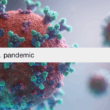
The threat of airborne diseases is a constant concern in public health. This comprehensive guide delves into the prevention, control, and understanding of airborne diseases, highlighting essential measures to combat their spread. We will explore the role of direct contact in disease transmission, the importance of control prevention in health care centers, and provide practical insights into safeguarding against infections.
Understanding Airborne Diseases
What Are Airborne Diseases?
Airborne diseases are infections spread through air particles. These include well-known illnesses like measles and less familiar ones like foot-and-mouth disease. The airborne transmission of these diseases makes them particularly challenging to contain.
Types and Symptoms
Airborne diseases vary in symptoms and severity. For instance, measles, a highly infectious disease, presents with fever and rash, while other airborne infections might have subtler symptoms.
The Mechanism of Disease Transmission
Airborne Disease Transmission
The transmission of airborne diseases occurs when infectious particles are expelled by an infected person and inhaled by others. This can happen through coughing, sneezing, or even talking.
The Impact of Direct Contact
While primarily airborne, some diseases can spread through direct contact with infected surfaces or individuals, complicating control and prevention efforts.
Strategies for Prevention and Control
Adopting Airborne Precautions
Precautions against airborne diseases include wearing masks, practicing good hygiene, and ensuring proper ventilation. These actions are crucial in preventing airborne transmission in both public and private settings.
Infection Control in Health Centers
Health care centers are on the front lines of battling airborne diseases. Implementing strict infection control measures is vital to prevent the spread of these diseases within these facilities.
The Role of Disease Control Centers
Centers for Disease Control and Prevention (CDC)
Organizations like the CDC are instrumental in providing guidelines and resources for disease control and prevention. They play a critical role in managing outbreaks and educating the public.
Public Health Strategies
Effective public health strategies are essential in managing airborne diseases. These include widespread vaccination campaigns, public education programs, and continuous monitoring of disease patterns.
Case Studies and Examples
Managing Measles Outbreaks
Recent measles outbreaks highlight the importance of vaccinations and public awareness. The response by health care centers and public health agencies demonstrates effective disease control strategies.
Tackling Foot-and-Mouth Disease
The management of foot-and-mouth disease in livestock offers insights into airborne disease control in different contexts, emphasizing the need for sector-specific strategies.
Frequently Asked Questions
What are 3 airborne precautions?
Standard Safety Measures.
individual respiratory defense. respirator N95. Pre-testing that needs to be done again every year, as well as fit- and seal-checking before every use.
How do we prevent the spread of disease?
Use as many preventive techniques as you can in those circumstances, including hand hygiene, wearing a high-quality mask consistently and correctly, increasing ventilation, and avoiding close contact with the sick or positive test subject when at all possible.
What is airborne safety?
Precautions must be taken when flying in order to prevent the spread of infectious agents. Measles, Severe Acute Respiratory Syndrome (SARS), Varicella (chickenpox), and Mycobacterium tuberculosis are among the illnesses that call for flying precautions.
Why is airborne called airborne?
For the typical soldier, the word "airborne" only refers to parachute forces. However, that was not the word's original meaning, nor is it its current meaning. During World War II, the phrase applied to all airborne forces. parachute, air-landed, and then glider.
Conclusion
Understanding and preventing airborne diseases is a complex but essential task. From adopting airborne precautions to leveraging the expertise of disease control centers, a multifaceted approach is necessary for effective disease management. This guide aims to provide a thorough understanding and practical tips for combating these infectious threats.



